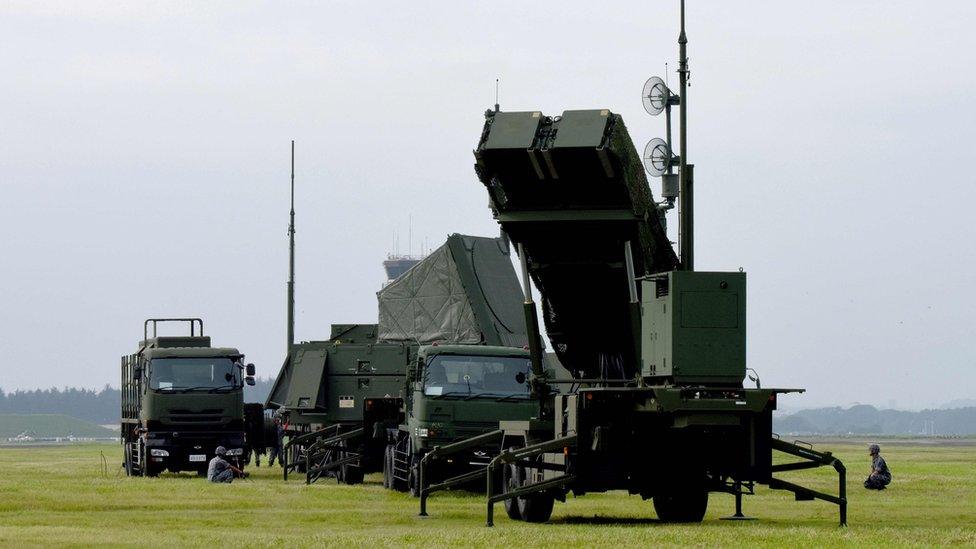North Korea says new missile puts all of US in striking range
- Published
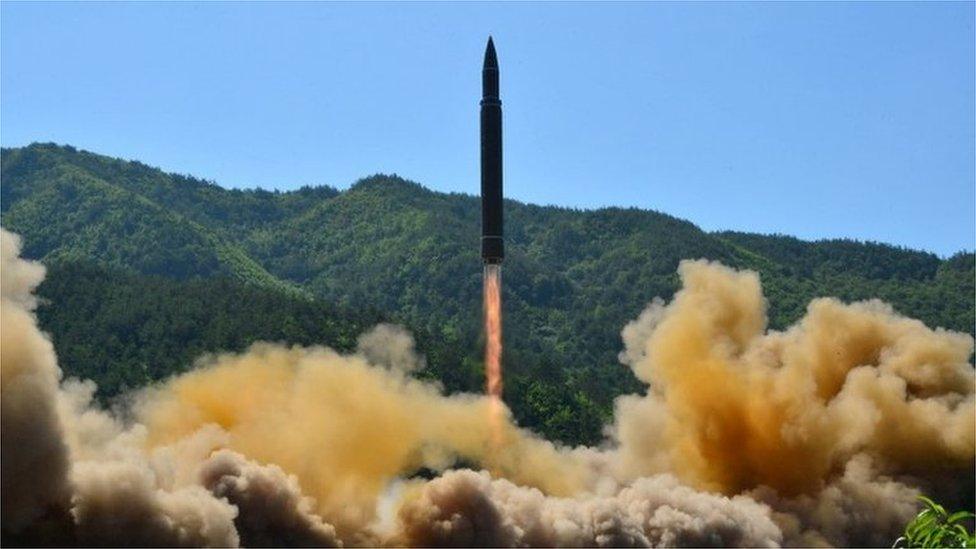
North Korea has repeatedly tested missiles this year, including this launch in July
North Korea says it has successfully tested a new type of intercontinental ballistic missile (ICBM) that can reach the whole of continental United States.
State television said Pyongyang had achieved its mission of becoming a nuclear state.
The Hwasong-15 missile, described as its "most powerful", was launched in darkness early on Wednesday.
It landed in Japanese waters but flew higher than any other missile the North had previously tested.
The test, which defied international sanctions imposed over the North's weapons programme, drew swift international condemnation, with the UN Security Council due to convene an emergency session.
South Korea responded by carrying out live-fire drills, launching one of its own ballistic missiles.
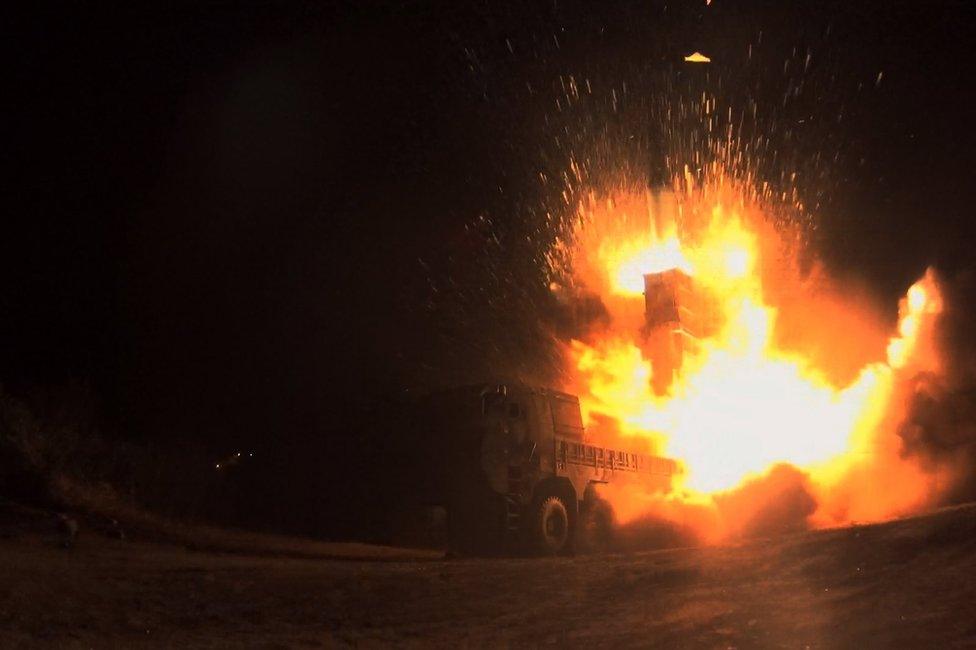
South Korea launched a Hyunmoo-2 missile in response on Wednesday
Why this launch was different
News of the launch was announced on state television in a special broadcast at midday, as well as in a report released by state news agency KCNA.
Pyongyang says the missile reached an altitude of 4,475km (2,780 miles) and flew 950km in 53 minutes, close to independent estimates made by South Korea's military.
The projectile, fired at a steep incline, did not fly over Japan as some have done in the past, and landed about 250km short of its northern coast, according to Japanese officials.

North Korea has previously said that its projectiles can hit the US but this marks the first time it says it can do it with this new type of missile, which appears to be an upgraded version of previous models.
KCNA added that North Korean leader Kim Jong-un, who personally signed off on the launch, "declared with pride that now we have finally realised the great historic cause of completing the state nuclear force, the cause of building a rocket power".

North Korea missile 'higher' than previous tests, says US Defence Secretary Mattis
The report said that "as a responsible nuclear power and a peace-loving state", North Korea would "make every possible effort to serve the noble purpose of defending peace and stability of the world".
It said its weapons, meant as a defence against "the US imperialists' nuclear blackmail policy", would "not pose any threat to any country" as long as North Korean interests were not infringed upon.
"This is our solemn declaration."
How could war with North Korea unfold?
How far the missile could have flown

An analysis by the US-based Union of Concerned Scientists concludes that, external the missile could have travelled more than 13,000km on a standard trajectory, thus reaching "any part of the continental United States".
But it seems likely, the analysis adds, that the missile had a very light mock warhead, meaning it might lack the power to carry a nuclear payload, which is much heavier, over that distance.
North Korea however says the Hwasong-15 could reach mainland US carrying a "super-large heavy warhead".

The risky business of interpreting Pyongyang's words
Paul Adams, BBC News, Seoul
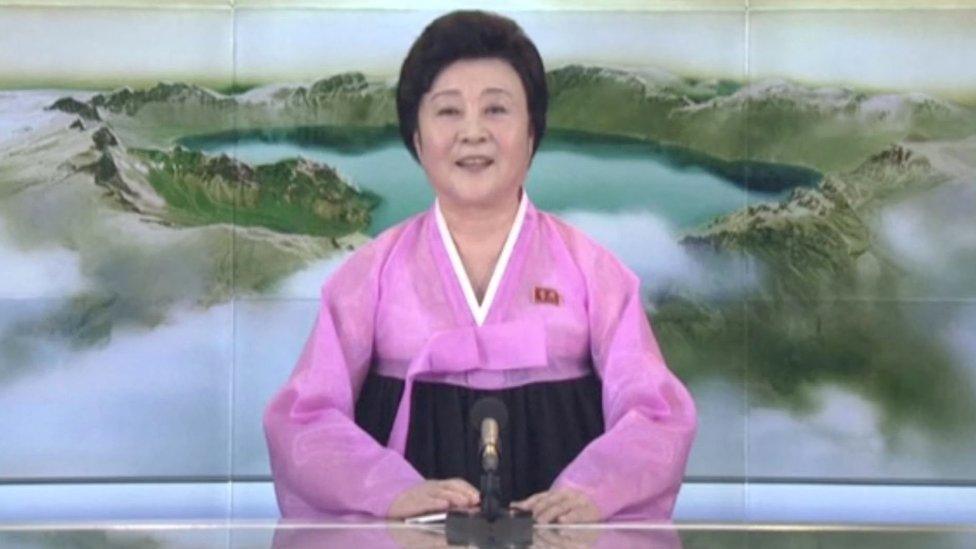
The statement was read out by veteran North Korean presenter Ri Chun Hee, who usually delivers important announcements
Experts believe North Korea is still two to three years away from the ultimate goal of being able to deliver a nuclear warhead successfully using an ICBM.
This involves some of the most delicate, challenging technology. It is no good putting a nuclear weapon on an ICBM if the warhead disintegrates on its re-entry into the Earth's atmosphere.
No-one really thinks North Korea has cracked this challenge yet.
And what of Pyongyang's "solemn declaration" that its missiles won't pose a threat to anyone "as long as the interests of the DPRK are not infringed upon"?
It might sound like an olive branch but it is likely to be greeted with more than a little scepticism. Its "interests", after all, include the development of the most destructive weapons known to mankind.
Most experts expect to see no let-up in Kim Jong-un's single-minded pursuit of a full nuclear capability.
And that almost certainly means more sanctions and pressure by those countries, led by the United States, who are determined to stop him.

How the world is responding
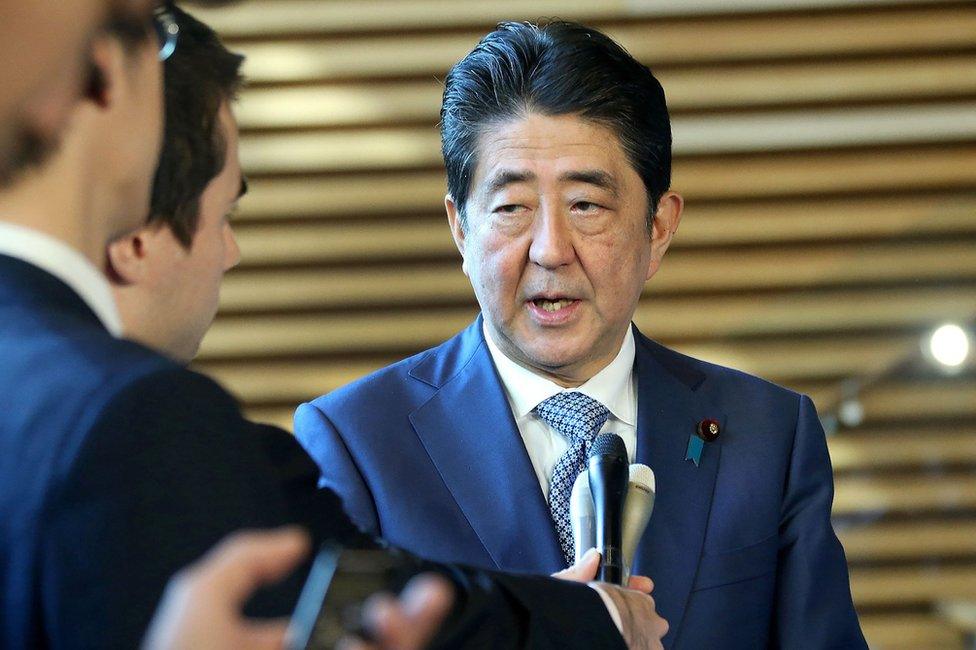
Japanese Prime Minister Shinzo Abe said such launches were intolerable
Prior to North Korea's statement, US defence secretary James Mattis said the missile launch had gone "higher, frankly, than any previous shots they have taken", and said North Korea posed a worldwide threat.
US President Donald Trump was briefed while the missile was still in the air, the White House said. Afterwards he said: "We will take care of it."
In other reaction:
UN Secretary General Antonio Guterres said the launch had violated sanctions and shown "complete disregard for the united view of the international community"
China expressed "grave concern" and urged all parties to show caution
Japanese Prime Minister Shinzo Abe called the launch an intolerable, violent act
The Kremlin described the test as a "provocation"
South Korean President Moon Jae-in accused the North of "reckless" behaviour but added that there was no choice but to keep applying sanctions
The launch is the latest in a series of weapons tests that have raised tensions to unprecedented levels, as North Korea ignores criticism and continues to develop its nuclear and missile programmes.
Pyongyang last launched a ballistic missile in September, the same month it conducted its sixth nuclear test.
- Published9 August 2017
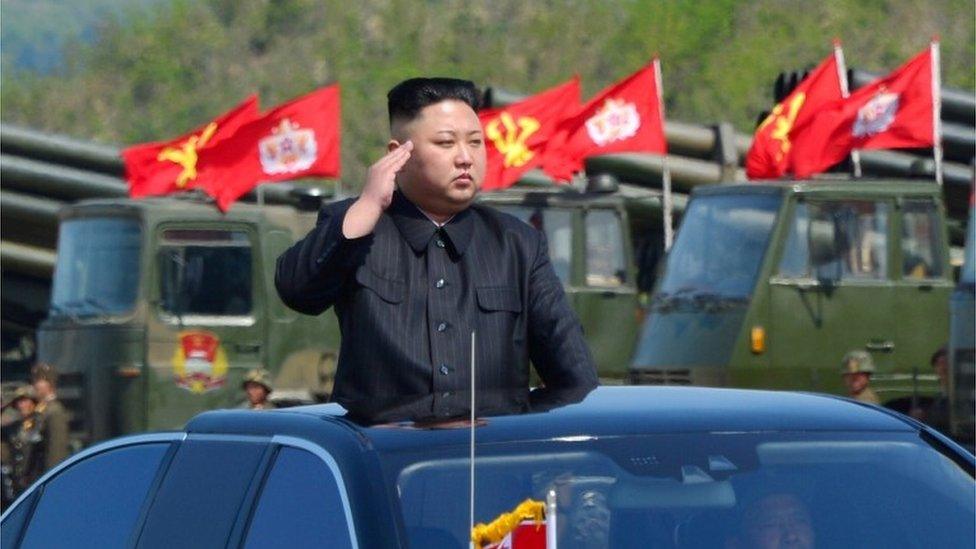
- Published10 August 2017
- Published15 September 2017
- Published15 September 2017
